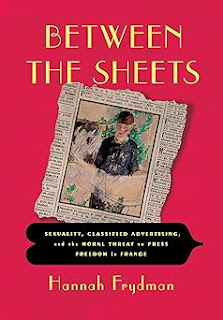 the BBC. He has a PhD in Philosophy, and degrees in Theology and Physics. His previous book topics include Dante, Plato and Christianity.
the BBC. He has a PhD in Philosophy, and degrees in Theology and Physics. His previous book topics include Dante, Plato and Christianity.
Vernon applied the “Page 99 Test” to his new book, Awake!: William Blake and the Power of the Imagination, and reported the following:
Page 99 of my book, Awake!, is in the middle of a chapter considering one of the myths about William Blake that I hope to nuance, namely that he was into free love. There is no doubt that the poet and painter was fascinated by the erotic and, at various points in his life, wrestled with its demands, particularly in the years of his youth. But as the heat of passion morphed into a wider love of life, he realised something crucial: youthful eros can expand into an appreciation that is both less fleeting and more connecting. There is a pleasure to be had in the immediacy of all the beings that surround us – be they animal, vegetable or mineral. There can be a realisation that they are each connected to the source of life itself, as indeed we are.Visit Mark Vernon's website.
For this reason, in the middle of page 99, I quote some of Blake’s best known lines: “To see a World in a Grain of Sand, And a Heaven in a Wild Flower. Hold Infinity in the palm of your hand And Eternity in an hour.” Beheld with love, the humble grain of sand and the simple wildflower make the boundless tangible. These things become sacred, for as Blake elsewhere puts it: “Everything that lives is holy.”
So, Awake! passes the Page 99 Test. Dipping in on that page provides an excellent touch point for what I am trying to get across about Blake.
After all, he is often appreciated as a great artist or astute social commentator. But at the heart of his vivid perception of things lies a mystical vision: everything, in its own way, shines with the radiance of the divine.
The imagination is the faculty by which we can know that immanent transcendence, not because we have imagination, but rather because the imagination has us. “Nature is imagination itself!” Blake exclaims at one point. Learning both to trust and discern our imaginations is therefore key to his message, for that is an echo, reflection and sharing in the imagination that shapes all things and gives them life.
With the imagination, we can learn to overcome the alienation many today feel – alienation from the natural world, other human beings, even themselves and the divine wellspring. That way, Blake argued, politics might be renewed and individual people find lasting fulfilment.
Incidentally, he lived in immensely turbulent times. The American War of Independence and its aftermath erupted when he was an adult, as did the French Revolution and the subsequent bloody wars that raged across Europe, alongside other parts of the world. On occasion, affairs grew so dark that they felt existential for England and for Blake as well. But he never lost trust in the love of life that, through the imagination, can renew our relationship with everything and everyone around us. That is why Blake’s poetry and imagery can powerfully speak to us today.
The Page 99 Test: Science, Religion and the Meaning of Life.
--Marshal Zeringue
























